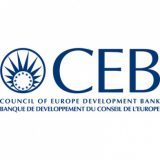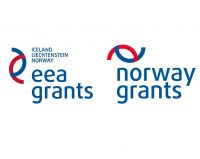The 28th International Steering Committee meeting of the Decade of Roma Inclusion concluded in Sarajevo on September 10-11, 2015. The event was an occasion to review the Decade’s accomplishments and challenges, and for which two publications were prepared by the Decade Secretariat to aid and guide our future endeavors to close the gap in educational outcomes between Roma and non-Roma, among others.
The 28th International Steering Committee meeting of the Decade of Roma Inclusion concluded in Sarajevo on September 10-11, 2015. The event was an occasion to review the Decade’s accomplishments and challenges, and for which two publications were prepared by the Decade Secretariat to aid and guide our future endeavors to close the gap in educational outcomes between Roma and non-Roma, among others.
The Roma Inclusion Index 2015 is the first publication to propose a list of relevant indicators and test the availability of existing data to measure progress or the lack thereof in addressing the exclusion of Roma according to the Decade priorities. It is not a data collection exercise – it only attempts to identify and gather in a comprehensive yet easily readable form existing data collected either officially by governments or by others. Hesitation to publish something similar before was due to the scarce existence of official periodic comparable data, but also the lack of agreement among Decade partners on indicators relevant for Roma inclusion. The Secretariat therefore decided to propose such a list itself, based on the work of experts such as those in the Fundamental Rights Agency Working Party on Roma Integration Indicators, to gather all the available quantitative data, although not sufficiently comparable and representative, and to publish the results. We hope this experience will assist the FRA and the European Union in establishing a standardized system of indicators and data collection on Roma inclusion.
The Decade aimed at “eliminating discrimination and closing the unacceptable gaps between Roma and the rest of society,” notably in the areas of employment, education, health and housing, taking into consideration the cross-cutting areas of non-discrimination, gender equality and poverty reduction. Therefore, the Roma Inclusion Index contains a selection of indicators in all of these areas. Gender is mainstreamed in all the indicators by reporting on gender disaggregated data where they exist. For all the indicators the Roma Inclusion Index is looking for the difference (gap) between Roma and the overall population as the goal of the Decade was to close the gap. The indicators of the Roma Inclusion Index are intended to be fully consistent with the larger set of indicators being developed by the Fundamental Rights Agency.
The Roma Inclusion Index applied a very simple and flexible methodology for gathering existing data. Consultants were engaged for each Decade country to identify and gather data. They prioritized official data, but also used data produced by international organizations or civil society. They gathered data for the years 2005 and 2014 if available, or otherwise data from years closest to the target dates. Definitions of the indicators were applied as strictly as possible, and in cases where data fitting these definitions were not available, available data as close to the definition of the indicator as possible were provided. In some cases of unavailable data consultants combined datasets and performed estimations.
In the Roma Inclusion Index 2015, after the introduction of the publication and the summary of the findings, the reader will find country-by-country visual presentations of the data for the total population, Roma and Romani females for each indicator. Concluding notes on the gap between the total population and Roma (as well as Romani females) and on the trend during the Decade period are drawn for each indicator.
A Lost Decade? Reflections on Roma Inclusion 2005-2015
Following the decision on marking the end of the Decade of Roma Inclusion 2005-2015 at the 28th International Steering Committee in Sarajevo, the Decade Secretariat saw an inevitable process of providing an overall reflection on this international initiative and its actual impact on local, national and international level. For that purpose, we published an assessment to mark the closure of the Decade of Roma Inclusion 2005-2015. The aim of the publication is to describe and explain the developments and processes; as well as highlight the achievements and failures of the Decade of Roma Inclusion 2005-2015 initiative, including the reasoning behind it. It focuses on the international perspective, with notions on the differences between participating countries where relevant.
The publication provides an assessment of progress in the four priority areas including the cross-cutting issues; analyzes the Roma participation part of the Decade; as well as offers legacies for a continued commitment to work on Roma inclusion policies, targeting EU officials, national and sub-national government officials, public servants, civil society representatives, media, as well as Roma and non-Roma citizens.
An extensive source of information was provided through interviews conducted with key stakeholders, including local level Roma activists, government officials, and representatives of international organizations, as well as with the co-founder of the Decade initiative Mr. George Soros.
Original text by Tünde Buzetzky, Orhan Usein and Alexandra Bojadieva

















